What Is Climate Reporting (And Why Should You Care When Booking a Caterer)?
These days, more and more event hosts like yourself, are caring about their environmental footprint just as much as they care about their canapés and we love that!
But how do you actually know if your catering is sustainable? That’s where climate reporting comes in. Think of it as keeping tabs on your impact, the kind that doesn’t show up on the plate, but still matters. It means we are tracking things like how your ingredients are grown, how far they’ve travelled, to how we power our kitchens and what happens to the leftovers. Every step has a footprint.
At Radish Events, we believe climate reporting is one of the most powerful tools a catering business can use to take real, measurable climate action. It’s not just about food waste or swapping to bamboo forks (although we do that too). It’s about understanding where carbon emissions are hiding in our supply chain, operations, and even your guest’s plates and making smarter, lower-impact choices.
Why Climate Reporting Matters to You as a Client?
Whether you're organising a council event, a corporate conference, or a community celebration, you want suppliers who align with your values. Climate reporting helps us back up our sustainability claims with actual data, not just feel-good language.
When you work with a caterer who tracks their emissions, you're choosing a team that:
Knows exactly where its biggest environmental impacts are
Is taking real action to reduce those impacts
Can show you the numbers, not just the marketing
All this means that you don’t just have to take our word for it, we can show you how our menus, operations, and supply chains perform when it comes to emissions.
What Does Climate Reporting Actually Measure?
When looking at climate reports, you might hear the terms "Scope 1, 2, and 3 emissions" and here’s what that means in plain language:
Scope 1: Direct Emissions
Things we control, like the fuel in our delivery van or gas used in our kitchen.Scope 2: Indirect Energy Emissions
Electricity and power we buy to run our fridges, lighting, or dishwashers.Scope 3: Supply Chain and Beyond
The emissions linked to everything else, from how far your vegetables travel, to the packaging your food comes in, to how leftovers are disposed of.
We track all three scopes. Because to truly reduce our footprint, we need the full picture.
What Should You Look for in a Catering Company’s Climate Report?
If you’re reviewing a catering supplier’s sustainability claims, keep an eye out for:
Total Emissions
How many tonnes of CO₂e (carbon dioxide equivalent) are they responsible for annually?Breakdown by Scope
Are they measuring all three scopes? Or just cherry-picking the easy ones?Menu Impact Transparency
Can they show the carbon cost of their menus or ingredients?Reduction Goals
It’s not enough to just measure. Are they actively trying to do better each year?Supply Chain Transparency
Do they know where their food comes from? Are they choosing lower-impact options like local produce or plant-based menus?Waste Management
Are they tackling end-of-life emissions through composting, donation, or responsible offsetting?
At Radish Events, we believe in full transparency. We use third-party tools to help measure our emissions and we’re working towards event-by-event reporting so we can show you the impact of your specific menu choices.
We’re proud to say our clients choose us not just for our food, but for our values.
How Climate Reporting Drives Real Change in the Catering Industry
Sustainability isn't a checkbox, it’s a journey. And climate reporting helps businesses like ours track what’s working, where we can improve, and how we can keep raising the bar. It’s also a way of holding ourselves accountable to the promises we make publicly and internally.
Here’s the exciting bit: when you measure your carbon emissions, you start to get creative.
Thanks to climate reporting, we’ve:
Reduced the number of red meat items, and replaced them with delicious lower-impact options
Created a strict procurement guide to help us choose suppliers who share a low-impact mindset
Introduced discount incentives for menus with plant-based mains instead of animal protein
Share our carbon metrics at events to raise awareness and provide accountability
Each of those changes came from data-driven insights, not guesswork.
What Does Radish Events Include in Our Climate Reports?
We don’t just talk the talk, we walk the walk, compost bin in hand. You can see our carbon reports and sustainability commitments over on our Sustainable Catering page.
Some highlights:
All emissions tracked across Scope 1, 2, and 3
Plant-forward menus designed with carbon impact in mind
Supplier engagement to trace and reduce embedded emissions
Food waste and packaging stats
What we’re doing to lower those numbers every year, from plant-rich menus to electric vans.
Why We Believe in Radical Transparency (Even When It's Messy)
We’re not perfect. But we’re doing the work, and we’re committed to showing you exactly where we’re at and where we’re going.
We believe in climate reporting because it helps us stay honest, make better decisions, and support clients like you who care about more than just the menu. It helps you host events that reflect your values.
Because catering isn’t just about feeding people. It’s about feeding a better future one meal (and one data point) at a time.
You can explore our full climate reports, sustainability commitments, and how we’re making catering more climate-conscious on our Sustainable Catering page. Or, just get in touch, we’re happy to talk through what this means for your next event.

